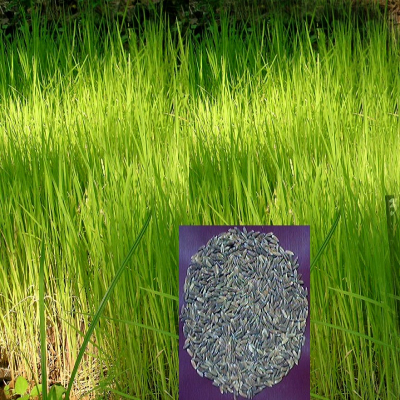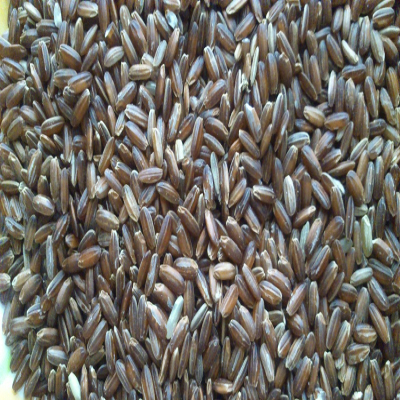Distribution and habitat: O. sativa cv Njavara is a unique variety of rice found in the state of Kerala. It's cultivation is confined to Kerala, India and its germplasm is largely undocumented.
Botany: The botanical characters of njavara rice are similar to that of cultivated rice. It is an early maturing variety with 60 days duration when grown in normal soil under rain fed conditions. Grains have rich aroma. Two ecotypes have been identified which differ in glume colour viz. black and golden yellow. Between the two strains njavara black, without awn is preferred by the physicians of north Kerala as more useful for medicinal purpose. But in the south Kerala, physicians are of opinion that njavara with golden coloured glum is superior.
Properties: Known as wonder rice with very special health and therapeutical qualities
Uses:
- As a health food palkanji (rice gruel made in cow’s milk adding sugar) ensures longevity. It is even recommended as a safe food to diabetic patients.
- New born babies are fed with a local dish made of njavara flour and dried powder made from kannan plantain. Local healers claim it could cure hemorrhoids (piles) and decoctions made out of the root of njavara could solve the urinary problems of children.
- Njavara flakes pounded with roots of Aswagandha and sugar increase vigour, body weight and act as an aphrodisiac. It is also believed that njavara rice increases semen and fertility in male and is recommended for childless couple.
- It is also claimed to cure stomach ulcer and generate blood to wipe off anemia. Also help in building muscles in polio affected parts.
- Ayurveda is packed with narrations on great uses of njavara and ‘njavara kizhi’ the popular treatment in panchakarma chikilsa.
Propagation: By seed


